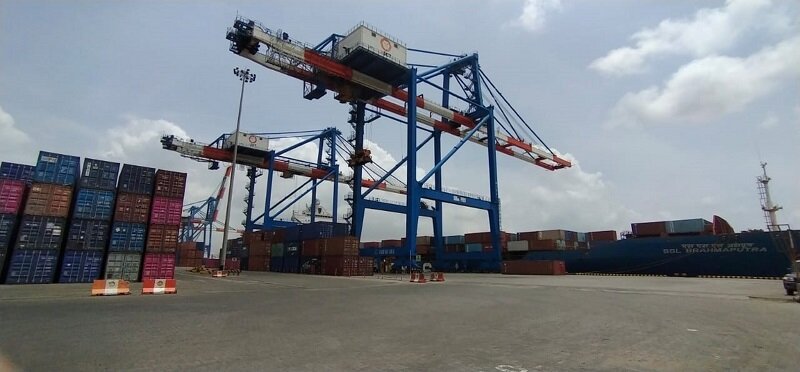Iranian ports’ capacity can double in a 5-year course

TEHRAN- Iran’s ports, as the major gates of exports and imports, play some significant role in the country’s global trade, and the ongoing operation at the ports indicates that they are playing their part perfectly in this regard.
Attaching great importance to the role of ports, Iranian government has been always put the development of ports a top agenda of its activities.
The current government has also taken noticeable steps in this regard, which has been resulted in boosting the capacity of ports to 250 million tons from 180 million tons during nearly eight years. The figure is now reaching 280 million tons.
By examining the regional conditions and capacities of ports, Iran’s maritime sector has always put the development and equipping of the country's ports in line with the developments and advances of technology and the latest technologies in the world, and despite the limitations due to the expansion of sanctions, it has been able to increase the capacity of commercial ports through relying on the specialized and experienced manpower and utilizing the power of domestic expert consultants by defining and advancing development projects in the country's ports.
In this regard, Iran’s Ports and Maritime Organization (PMO) defined a high number of projects at the beginning of the current government’s incumbency to develop and improve the country’s ports.
Among the most significant projects in this field, it could be referred to the development of Shahid Beheshti port in Chabahar, continuing implementation of the first phase of container terminal of Shahid Beheshti port, completing the first phase of Shahid Rajaee port’s development, continuing the second phase of developing Shahid Rajaee port, continuing the first phase and implementing the second phase of Amir-Abad port development, continuing development of Anzali port, development of Negin island in Bushehr, development of infrastructure in logistic areas of Shahid Rajaee port, Imam Khomeini port, Amir-Abad port, and Negin island, maintenance of the docks of commercial ports, rebuilding and supplying strategic maritime, port, and telecommunication equipment, improving buildings and infrastructure in the ports, development of passenger terminals in Anzali port, Khorammshahr port, Lengeh port, Khark port, and Genvahe port, as well as equipping the passenger terminals with the modern equipment.
It worth mentioning that the above-mentioned projects in terms of developing the passenger terminals have increased the passenger capacity of ports to 25 million people from 14 million people in a course of eight years.
Given that Iran is one of the countries that has a special status in trade and transit relations due to its strategic location and special geography, as the country is the passage of several important international corridors, the role of ports comes more under the spotlight.
Considering the country’s transit statistics, it is obvious that Iran is taking the advantage of its strategic status in this due, specially through its ports.
The most recent reports released in terms of the operation of Shahid Rajaee port, which is Iran’s largest and most modern container port located in the southern Hormozgan province, indicates that the transit of goods via this port has increased 160 percent in the first month of the current Iranian calendar year (March 21-April 20), as compared to the same period of time in the past year, as 20,231 twenty-foot equivalent units (TEUs) of commodities were transited via Shahid Rajaee port in the said month.
Given all the measures being taken for the development of ports, and also the PMO’s plans for the attraction of more investment in this regard, it could be said that the target of doubling Iran’s ports capacity in a course of five years is clearly possible.
Last month, an official with the PMO announced that the organization plans to increase the attraction of private sector investment in the country’s ports by five trillion rials (about $119 million) in the current Iranian calendar year (started on March 21).
According to PMO’s Deputy Head for Ports and Economic Affairs Farhad Montaser Kouhsari, the organization has increased the target for attracting investment in the current year from 160 trillion rials (about $3.8 billion) to 165 trillion rials (about $3.9 billion).
“This goal will be achieved by creating a proper space for investment in the ports and by providing the necessary incentives for investors, as well as awarding production and conversion projects,” Montaser Kouhsari said.
Considering the significant role of ports in the promotion of foreign trade especially export, Iran, which has adopted the strategy of boosting its non-oil export to counter the U.S. sanctions on its economy, has many programs underway for the development of its ports.
In this regard, the PMO has put the attraction of investment to the ports on agenda, and despite the restrictions and limitations created by the outbreak of the coronavirus, investment-making in the Iranian ports increased significantly over the previous Iranian calendar year.
Leave a Comment